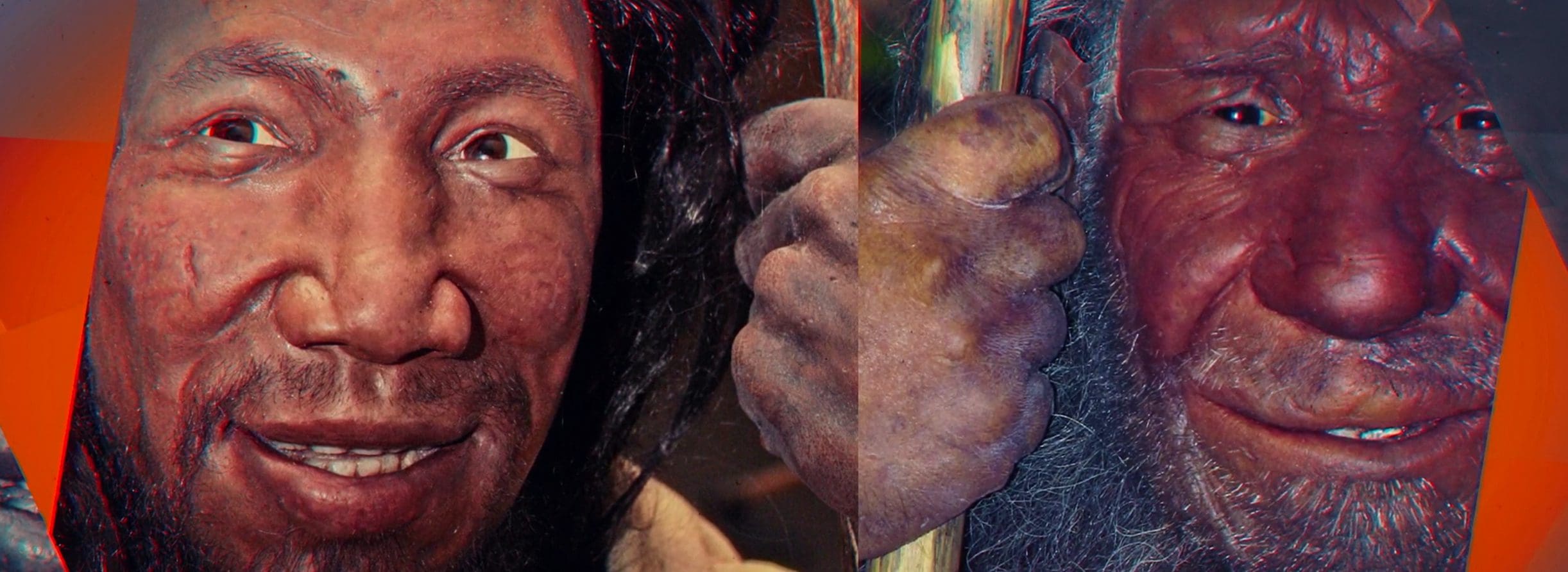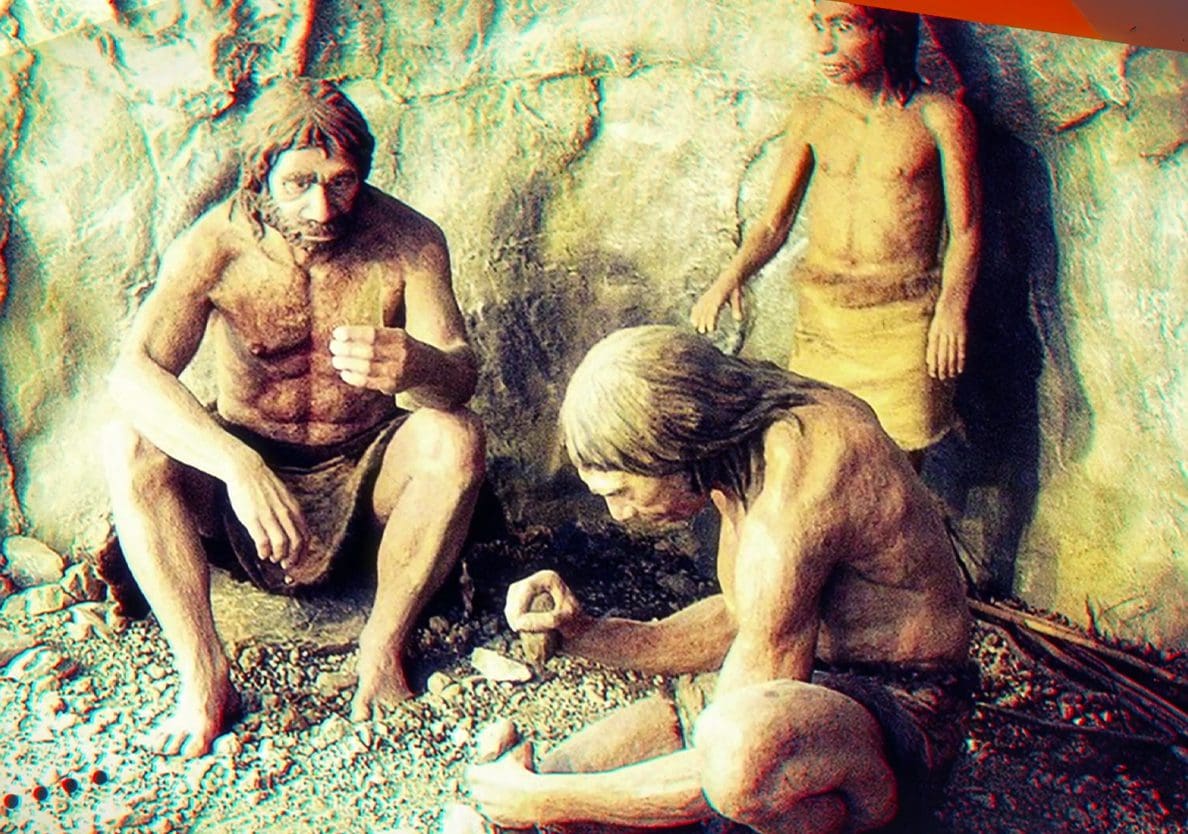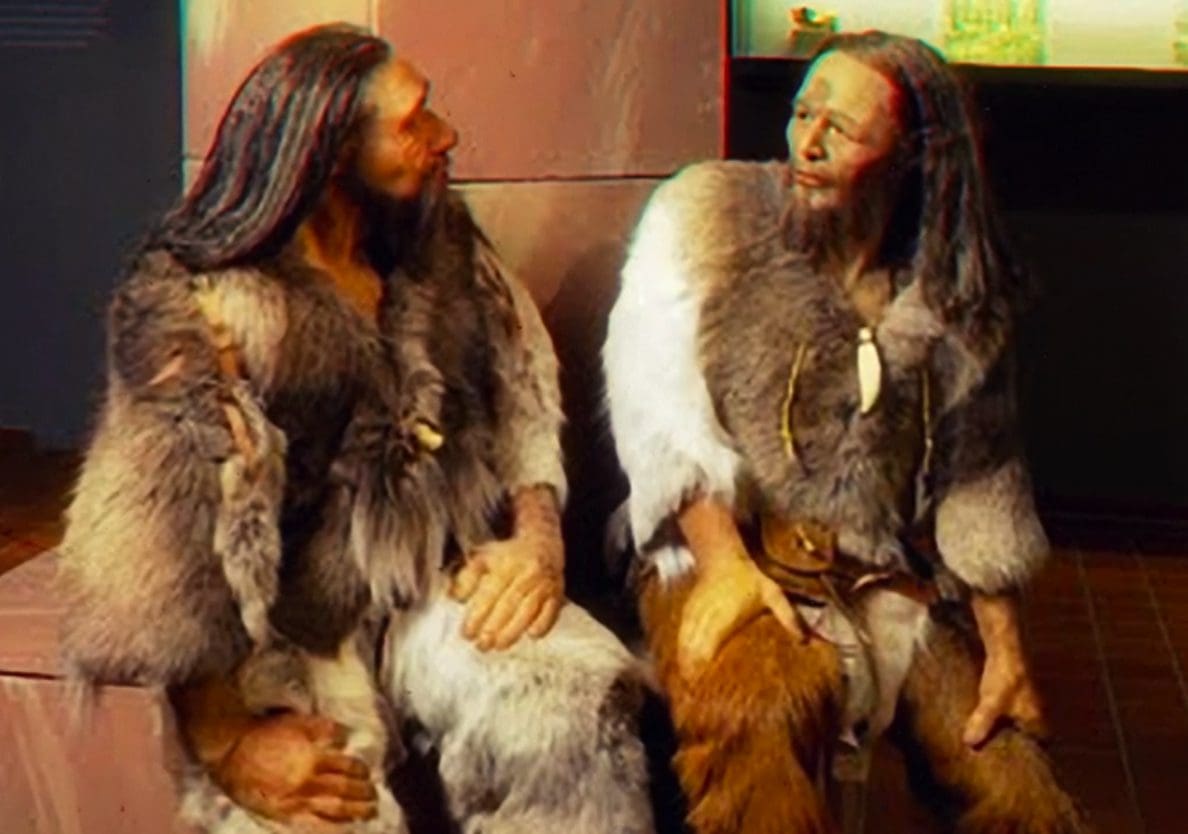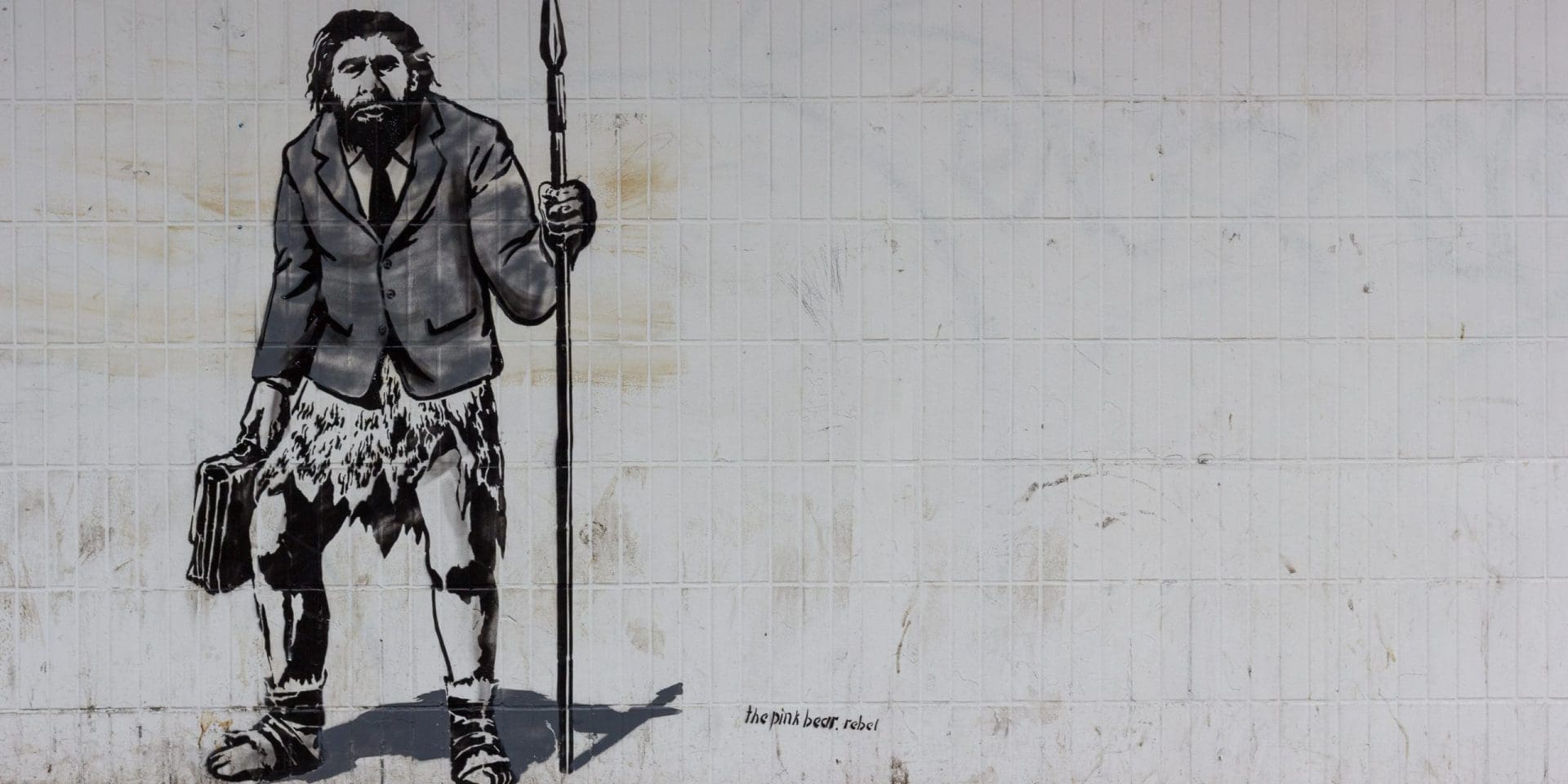Since their discovery in the 1850s, Neanderthals had, up until recently, been regarded by the majority of evolutionists as more of an animal rather than a human being. One of the main reasons for this was due to their seemingly sparse cultural inventory.
However, claiming that Neanderthals or any such group is sub human just because they apparently lack cultural inventory is a completely invalid assumption. This is obvious when we consider that, “there are modern-era people groups, such as aboriginal Tasmanians or nomadic tribes living today in Africa, who until recently, have had a very limited cultural inventory—arguably less advanced than that of Neanderthals.”[1] Yet no one denies their humanity. Probably then, Neanderthal’s so-called “inferior” cultural inventory is “a reflection of their hunter-gatherer lifestyle (or possibly due to a loss of technology as seen with the Tasmanians) rather than a reflection of their cognitive abilities.”[2] Even so, over the years it has been realized that Neanderthals did, in fact, have a quite impressive cultural inventory and possessed cognitive abilities on par with modern Homo sapiens. “In fact,” writes Christopher Rupe and Dr. John Sanford, “Neanderthals appear to showcase some skillsets superior to those of modern humans.”[3] While some make the claim that early Homo sapiens taught Neanderthals these higher human abilities, it seems, in at least some cases, that it was the other way around.
“Let Us make man in Our image, according to Our likeness.”
Genesis 1:26a
Despite the stereotype, Neanderthals were at least as intelligent and capable as we are, as their cultural inventory reveals (for a formal list of some of their behavioural practices and abilities see below). For example, we now know that Neanderthals had human language, symbolic communication, and even abstract thinking. They had tailored clothing and footwear demonstrating that they had the ability to sew, they made ropes and cords with their knot-making skills and being expert hunters of large game meant that they were clearly able to strategize beforehand their plan of attack. They also crafted sophisticated stone and bone tools as well as multipart (or hafted) weapons. Remains of fireplace hearths show that they had controlled use of fire and the fact that they had highly varied diets, could cook and fillet their food as well as dry out fresh meat shows that they were experienced chefs to boot.

Also, although Neanderthals are generally always thought of as “cave men”, in what is yet another breakaway from cultural stereotypes, they didn’t always live in caves. In fact, some constructed shelters or wind breaks as dwellings. But interestingly, those who did choose to live in caves often partitioned their dwellings into different living floors and spaces. But probably their greatest technological achievement was “their ability to synthesize pitch from birch bark through the controlled use of fire.”[4] As Rupe and Sanford go on to explain:
“Neanderthals used birch bark pitch as a type of adhesive to haft tools and weapons (e.g., fixing flint flakes to a wooden handle). Unlike natural forms of “glue” which can be taken directly from a tree (such as sap), birch bark pitch must be carefully produced through a complex process involving distillation in the absence of oxygen and the careful regulation of temperature (between 340-400 C). Experimental archaeologists have attempted to produce birch bark pitch without the use of modern technology. For instance, after many trials, German archaeologist Friedrich Palmer was able to produce small amounts of pitch through this process. Wil Roebroeks, an accompanying archaeologist, commented on the feat in wonder. He remarked that the know-how required of Neanderthals to perform this task “goes to show that they were very capable pyrotechnologists. We’re still learning how they did it…” Another team had great difficulty as well, but with a thermometer, they were able to do it on the first try. Paleo-archaeologists are hard pressed to know how exactly Neanderthals were able to perform a sophisticated process recognized by chemists today as “dry distillation.” Villa et al. note, “Experimental studies show that production of pitch in the absence of air-tight pottery containers requires a high degree of technical knowledge.” A number of Neanderthals sites have provided evidence of this technology.”[5]


Of course, as human beings, Neanderthals weren’t just physical creatures but, like us, they too were spiritual. They cared about things like music, beauty, and art. This is seen through their use of jewelry, cosmetics (red ochre), as well as their production of cave art, sculptures, and musical instruments. Yet, their single most defining human practice was their care for the injured, weak and elderly and the ceremonial burial of the dead. Only humans bury their dead, and this single discovery would be enough to put the final nail in the coffin of the evolutionary and cultural stereotypes of Neanderthal man.
Neanderthal, like every human being, was no animal but rather was specially and uniquely created in the very image of God (Genesis 1-2).
In Summary
Here’s a list of Neanderthal behavioural practices and abilities:
- Human Language
- Symbolic communication
- Abstract thinking
- Tailored clothing & footwear
- Sewing
- Cordage/knot-making
- Strategic hunting (large game)
- Planning/foresight
- Sophisticated stone/bone tools
- Multipart weapons (hafted)
- Fireplace hearths
- Controlled use of fire
- Highly varied diet
- Cooking/filleting
- Drying of fresh meat
- Wind breaks/shelters
- Living Floors
- Manufacture of pitch
- Personal adornment (jewelry)
- Cosmetics (red ochre)
- Art/sculptures
- Musical instruments (bone flutes)
- Care for injured/weak/elderly
- Ceremonial burial (spirituality)[6]

Ryan Hembree is a daily co-host, speaker, and writer of Bible Discovery. He also hosts a YouTube channel that shows the unity of the Bible and how science and Scripture fit together. Ryan also has an honorary Masters of Ministry in Creation Science from Phoenix University of Theology.
[1] Christopher Rupe and Dr. John Sanford, Contested Bones, First Edition Second printing, 47
[2] Ibid.
[3] Ibid., 49
[4] Ibid., 50
[5] Ibid.
[6] This list was taken and modified from Contested Bones, Christopher Rupe and Dr. John Sanford, 51
For further reading, I highly recommend the following:
- Contested Bones (book) – Christopher Rupe and John Sanford
- Bones of Contention (book) – Marvin Lubenow
- Searching for Adam (book) – Terry Mortenson
- A World by Design (DVD) – Ryan Hembree






